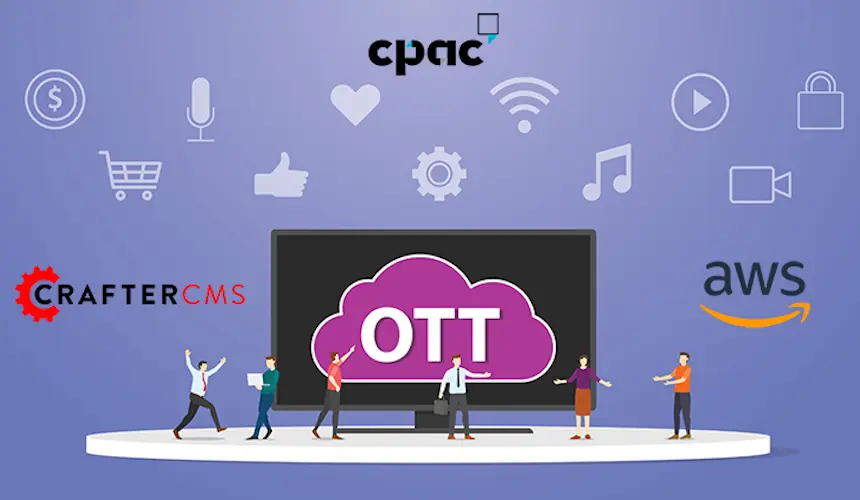Creating Custom LLMs for Your Enterprise

Amanda Lee

Creating a custom Large Language Model (LLM) might initially sound like a task reserved for experts with deep pockets and access to vast computational resources. However, the democratization of AI technology and the availability of open-source tools and platforms have made it increasingly feasible for organizations and even individual developers to embark on this journey. According to a recent survey, almost half of enterprises expect to increase their AI budgets this year by more than 25%, and 88% of them have started to invest in generative AI. This blog post will guide you through the essential steps to create your own custom LLM, focusing on practical advice and real-world applications.
Understanding Large Language Models
Before diving into the creation process, it's crucial to understand what LLMs are and why they're so powerful. Large Language Models are a type of artificial intelligence that can understand, generate, and interpret human language. They are trained on vast datasets of text and learn to predict the next word in a sentence, enabling them to generate coherent and contextually relevant text based on the input they receive.
General Purpose LLMs vs. Custom Enterprise LLMs
General Purpose LLMs, are designed to perform a wide range of tasks, from answering questions to composing essays, making it a versatile tool for various applications. ChatGPT is pre-trained on a diverse dataset, allowing it to have a broad understanding of language and knowledge across many domains.
Custom LLMs, on the other hand, are Large Language Models developed for specific enterprises, purposes or industries. These models are trained or fine-tuned on a particular dataset relevant to their intended application, enabling them to excel in specialized tasks. Custom LLMs can be tailored to understand industry-specific jargon, comply with particular regulatory requirements, or optimize for unique conversational styles.
Key Differences
-
Generalization vs. Specialization:
- ChatGPT is a generalist model, capable of engaging in a wide variety of topics with reasonable accuracy. This broad capability makes it a jack-of-all-trades in the language model world.
- Custom LLMs are specialists, honed to excel in specific fields or tasks. They can provide more accurate and relevant responses within their area of expertise, outperforming general models like ChatGPT.
-
Training and Data:
- ChatGPT benefits from OpenAI's extensive training on diverse internet text, enabling it to have a wide-ranging understanding of language and knowledge.
- Custom LLMs require access to specialized datasets for training. The quality and specificity of this data are crucial for the model's effectiveness in its target domain.
-
Implementation and Costs:
- ChatGPT is readily accessible via OpenAI's API, allowing developers to integrate its capabilities without the need for extensive AI infrastructure or expertise.
- Custom LLMs involve a more complex development process, including data collection, model training, and continuous updating. This can result in higher initial costs and the need for specialized AI talent.
-
Privacy and Security:
- ChatGPT processes requests on OpenAI's servers, which may raise concerns about data privacy and security for sensitive applications.
- Custom LLMs can be deployed on private servers or cloud environments, offering more control over data privacy and security.
-
Customization and Flexibility:
- ChatGPT offers limited customization options. While it can adapt to various tasks through prompt engineering, its underlying model and training data remain constant.
- Custom LLMs offer greater flexibility, as developers can tailor the model's architecture, training process, and data to meet specific requirements.
Ideal Use Cases
- ChatGPT shines in applications requiring broad knowledge and conversational capabilities, such as educational tools, general customer service, and content creation for a wide audience.
- Custom LLMs are ideal for niche industries or applications where specialized knowledge is crucial. This includes legal research, medical diagnosis assistance, financial analysis, and personalized e-commerce experiences.
Creating a Custom Enterprise LLM
Step 1: Define Your Objectives
The first step in creating a custom LLM for your enterprise or industry is to define the objectives of your model. What specific tasks do you want your LLM to perform? Are you looking to create a chatbot, generate content, or perhaps develop a tool for sentiment analysis? The application will significantly influence the design and training process of your model.
Step 2: Gather and Prepare Your Data
Data is the backbone of any AI model. For an LLM, you'll need a large corpus of text data (e.g., 5000 GB) that is relevant to your model's intended application. This data can come from various sources, such as books, websites, or even transcripts of spoken language. Once you've gathered your data, you'll need to clean and preprocess it. This step may involve removing irrelevant information, correcting errors, and formatting the data in a way that's suitable for training your model.
Step 3: Choose Your Technology Stack
Several open-source frameworks and libraries can be used to train LLMs, such as TensorFlow, PyTorch, and Hugging Face's Transformers. Each of these tools has its strengths and weaknesses, so you'll need to choose one that aligns with your technical expertise and the specific requirements of your project.
Step 4: Model Training
Training an LLM is computationally intensive and can require significant resources, especially for larger models. You have a few options here:
- Cloud Computing: Platforms like Google Cloud, AWS, and Azure offer powerful computing resources for training AI models. They're scalable and flexible but can be costly.
- Collaborative Platforms: Services like Hugging Face allow researchers and developers to train and share their models with the community. This can be a more cost-effective way to access computational resources.
- Transfer Learning: Instead of training a model from scratch, you can use a pre-trained model and fine-tune it on your dataset. This approach requires less computational power and can still yield highly effective models.
Step 5: Fine-Tuning and Evaluation
Once your model is trained, you'll need to fine-tune it on your specific task. This involves training the model further on a smaller, task-specific dataset. After fine-tuning, it's crucial to evaluate your model's performance using relevant metrics, such as accuracy, precision, and recall, depending on your application.
Step 6: Deployment and Integration
After training and fine-tuning your model, the next step is to deploy it in a real-world application. This could involve integrating it into a website, a mobile app, or another software application. When deploying your model, consider the computational resources it will require and how to scale those resources as demand for your application grows.
Real-World Applications
Let's consider a few scenarios where a custom LLM could be particularly useful:
- Customer Service Chatbots: A custom LLM can be trained on your company's specific products and services to provide accurate and helpful responses to customer inquiries.
- Content Generation: Content creators in enterprises, media companies, or any industry can use LLMs to generate articles, reports, and summaries, freeing up human writers to focus on more creative and strategic tasks.
- Sentiment Analysis: Businesses can use LLMs to analyze customer feedback and social media posts, gaining insights into public sentiment about their brand or products.
Challenges and Considerations
While creating a custom LLM is more accessible than ever, it's not without its challenges. These include the ethical considerations of AI, ensuring the privacy and security of data, and mitigating biases in AI models. Additionally, the ongoing maintenance and updating of the model are crucial to its long-term success and relevance.
Conclusion
Creating a custom Large Language Model is an ambitious project that can yield significant benefits for businesses, developers, and researchers alike. By following the steps outlined in this guide and considering the practical applications and challenges, you can embark on this exciting journey with confidence. The key is to start with a clear objective, leverage the available tools and resources, and continuously iterate and improve your model based on real-world feedback and performance.
Related Tags
Related Posts

Websites Are Dead?

Mike Vertal

No-Code Experience Building for Marketers & Designers

Amanda Lee

The Future of Web Experiences: From Browsing and Searching to Conversational AI

Mike Vertal

Connecting Content and Campaigns: Integrating CrafterCMS with Salesforce Marketing Cloud

Sara Williams
Related Resources
-

CrafterCMS at eBay: The Universal Content Platform for eBay.com
Webcast
-

Personalized Digital Experiences for a Cruise Liner
Webcast
-

Modernizing Video Delivery and Content Management at CPAC, A Canadian Nationwide Broadcaster
Webcast
-

Partner Solution: Live Video and Conferencing for Digital Events
Webcast
-

The Hire Street: Powering Private Events and Catering E-Commerce with CrafterCMS
Case Study





